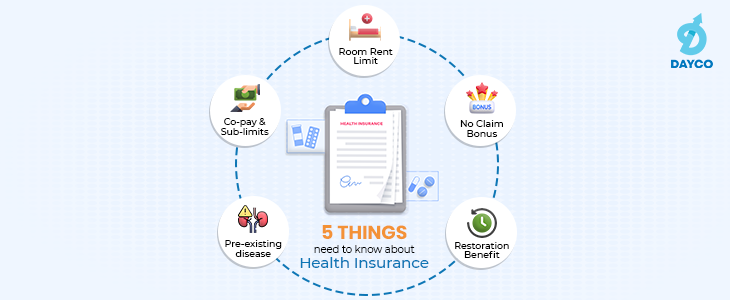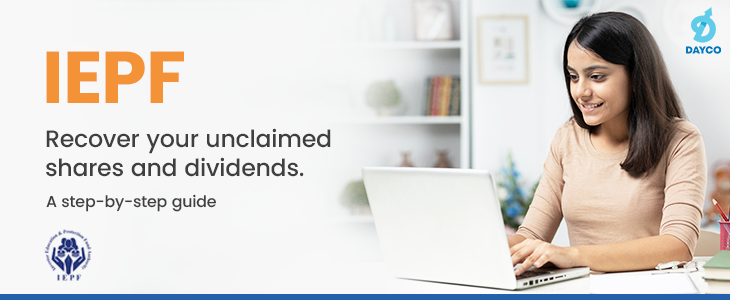Protecting the interest of investors is one of the primary objectives of SEBI and the government. They regularly come up with rules and regulations that ensure the financial safety of investors. Back in 2016, the government formed Investor Education and Protection Fund (IEPF) to further protect the interest of investors. The IEPF authority ensures that unclaimed shares, dividends, or debentures remain with IEPF until the rightful owners claim them. In this blog post, we will learn what IEPF is all about and how to raise a claim through the IEPF portal.
What Is Investor Education and Protection Fund?
The government established the Investor Protection and Education Fund Authority in 2016 to make sure all unclaimed shares, dividends, and debentures lying with respective companies are returned to the Investor Protection and Education Fund. The fund and the fund authority were formed under section 125 of the Companies Act.
The Investor Protection and Education Fund is similar to the Depositors Education and Awareness Fund of RBI. Just like after a certain period of time, unclaimed money in the bank is transferred to this fund of RBI, and unclaimed shares, debentures and dividends are transferred to Investor Education and Protection Fund.
Things That Can Get Transferred To Investor Education and Protection Fund
- Unclaimed dividend amount
- Unclaimed shares
- Matured deposits
- Matured debentures
- Unpaid amount paid by the investor for allotment of shares during IPO
- Even after unclaimed shares are transferred, any further issuance of bonus shares
–arising out of a stock split or merger will result in those bonus shares getting transferred to the Investor Education and Protection fund. - Any interest accrued by the unclaimed money will also be transferred to IEPF.
The Formation of IEPF Was Necessary. Here’s Why-
Although SEBI introduced trading through the DEMAT account way back in 1996, there are still millions of physical share certificate holders. To be precise, in 2022, 4230 million shares were in physical format. The total worth of such non-DEMAT shares was Rs. 3.5 trillion.
Now, unlike DEMAT account holders, these physical share certificate holders face a hard time updating their information with the companies whose shares they have bought. As a result, very often, the companies have old information about these non-DEMAT shareholders.
The above two factors result in two problems. First, the companies can’t transfer dividends to these physical share certificate holders digitally. Secondly, physical share certificate holders whose updated address or contact information is not there with the company fail to receive dividend cheques sent by the respective companies. As a result, the dividend remains unclaimed. Similarly, if a physical shareholder dies and no one from his family comes forward to claim the shares, they are termed unclaimed shares.
SEBI and the government have a moral responsibility to protect these unclaimed shares and dividends until a rightful owner comes. This is exactly why they created the Investor Education and Protection Fund. These unclaimed shares and dividends (and their total value) are kept in the fund. Valid shareholders or their heirs can claim the shares. Upon successful verification by the respective companies and the IEPF authority, the amounts are transferred to the claimant.
| Number of physical shares – around 4230 million Number of unclaimed shares – around 1.15 billion Total worth of unclaimed shares, dividend, others – Rs. 50,000 crores |
The shares whose accrued dividend remains unclaimed for seven years are transferred to the Investor Education and Protection Fund.
How to Recover Shares or Dividends From IEPF
Part 1 – Filling Up the IEPF5 Webform
Before recovering shares or dividends from Investor Protection and Recovery Fund, you should know that for the first seven years, the dividend amount remains with the company – in their Unpaid Dividend Account. It is only after the completion of seven years that the dividend amount and the shares are transferred to IEPF.
With that being said, let’s now find out how to recover shares and dividend amounts from IEPF –
Step 1 – Go to the IEPF portal and access the IEPF5 Webform (You need to be logged in). If you don’t have an account with the Ministry of Corporate Affairs, you need to create one by going here.
Step 2 – You need to fill up the IEPF5 web form. You can download the detailed guideline on how to fill up the form by clicking here. (Please read the instructions carefully – there are 7 sections in the web form. Each of these sections further has sub-sections).
Step3 – Submit the webform
Things You Need To Have With You Before Filling Up The Form
The IEPF portal will need you to submit relevant documents and information at the time of filling up and submitting the form. Make sure that you have –
- The details of the shares
- The Folio Number of the account that is connected with those unclaimed shares.
- The CIN of the company whose shares were bought
- If the original shareholder is not alive, you need to specify the relation between you and the original shareholder.
- For the dividend amount, you need to specify the bank account where the amount needs to be credited.
- For unclaimed shares, you need to specify your DEMAT account where the shares will be credited.
Relevant Documents Need To Be Furnished
During the submission, you need to upload relevant documents related to the request. If the claimant is the one who owns the shares and dividends, then he or she needs to submit a copy of the Aadhaar card. Other than that, based on the options selected while submitting the form, the claimant needs to furnish a copy of their passport or OCI / PIO card, the death certificate of the original shareholder (in case the original shareholder isn’t alive), notarised succession certificate or will, notarised indemnity bond etc.
Once you submit the form, you will receive an acknowledgment of the submission (along with SRN) in your email.
Things To Do After IEPF5 Submission
Once you submit the IEPF5 form, you need to send a copy of the form – along with the original indemnity bond and the copy of the acknowledgment receipt and copies of other documents- to the Nodal Officer of the respective company of whose shares or dividend you are claiming. That’s it. Your job is done.
What Happens Behind After Everything Is Done By You?
Once you submit the IEPF5 form, the Nodal Officer of the company will receive a notification from the IEPF authority asking the officer to submit an e-verification report. Once the company submits the e-verification report (hinting that they have no objection against the claim), the Investor Education and Protection Fund Authority will release the amount and the shares to the bank account and DEMAT account of the claimant.
The IEPF Authority is Taking Steps to Simplify the IEPF Claims Process
As you can see from the IEPF5 submission process mentioned above, the whole submission process can be too complex and time-consuming – especially for aged and not-so-tech-savvy people. The IEPF authority acknowledges this issue. In January 2023, the authority, in a consultation paper, invited comments from various stakeholders on how to simplify the claims process. Many people have already given some good suggestions, like shifting the onus of paying the claimant from the IEPF authority to the respective companies. This invitation for comment was necessary considering the fact that the IEPF authority has been able to credit less than two percent of unclaimed shares.
Bottomline
Indian stock market regulator – SEBI, along with the government, has left no stone unturned to make sure that the hard-earned money of the investors remains safe for as long as necessary. The Indian stock market is one of the most investor-friendly stock markets in the world. You can rest assured that the regulator will take all the necessary actions necessary for the safety of your wealth. Happy investing!
If you have a question, share it in the comments below or DM us or call us – +91 9051052222. We’ll be happy to answer it.
















